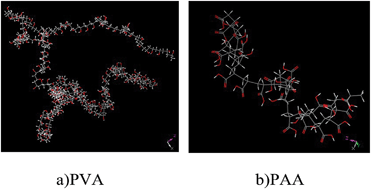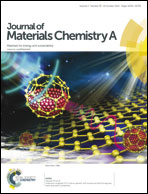Molecular simulation and experimental study on propylene dehumidification through a PVA–PAA blend membrane
Abstract
Poly(vinyl alcohol) (PVA) was blended with poly(acrylic acid) (PAA) to improve its separation performance for propylene dehumidification. In this study, molecular simulation was employed to investigate the effect of the PAA content on the properties and separation performance of the membranes. Membrane properties such as density, interaction energy between polymer chains, fractional free volume (FFV), and glass transition temperature (Tg) were analyzed by molecular dynamics (MD) simulation. The adsorption amounts and sites in the membranes were calculated by the Grand Canonical Monte Carlo (GCMC) method. The diffusion process of gas molecules through membranes was also studied both qualitatively and quantitatively by the Einstein relationship. The simulation results showed that the blend membrane exhibits better adsorption performance but lower diffusion coefficient of penetrants than the PVA control membrane. Furthermore, PVA control and PVA–PAA blend membranes were prepared experimentally. The adsorption and separation performance were evaluated. It was found that the changing trend of adsorption was consistent with that of simulation results. The PVA–PAA blend membrane exhibits better separation performance and permeation rate than the PVA control membrane. The permeation rate of gas feed first increased, and then fell down with the increase of the PAA content because of the rate-determining step changed from adsorption to diffusion.


 Please wait while we load your content...
Please wait while we load your content...